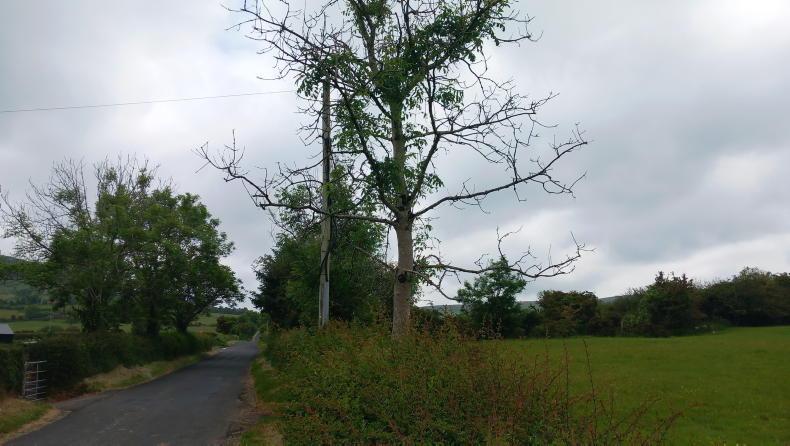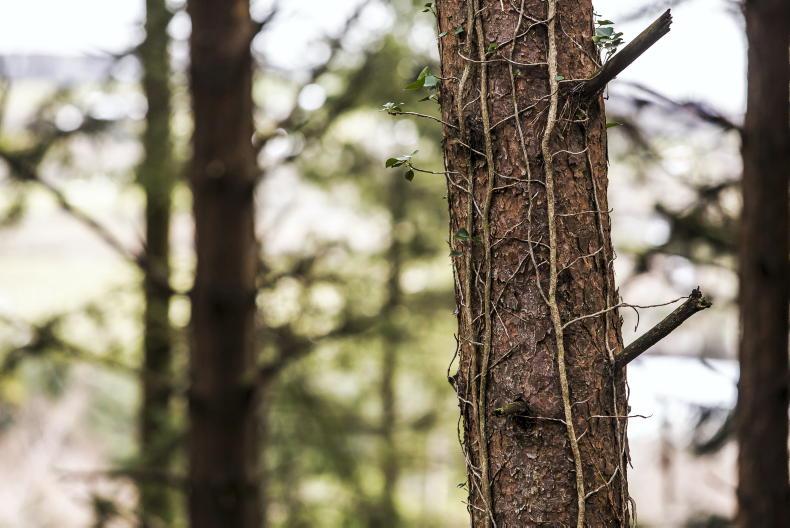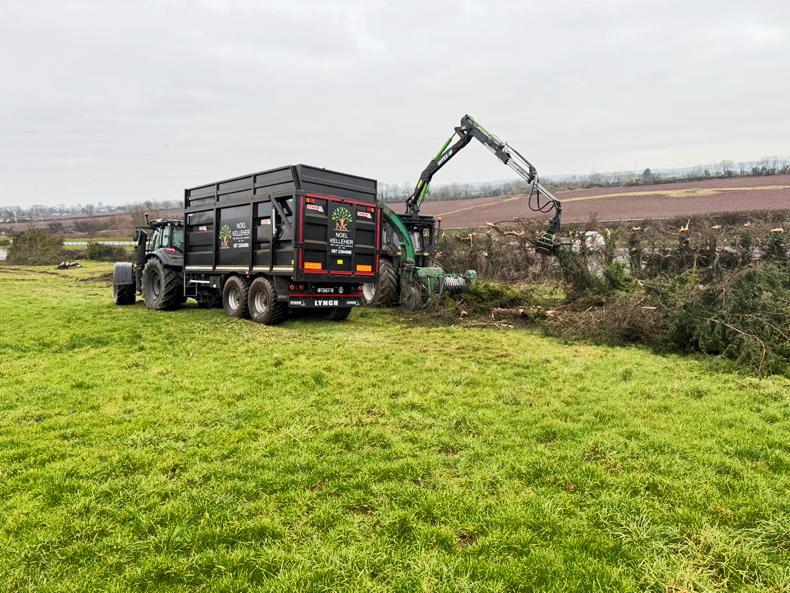It is the responsibility of private landowners in NI to remove dead trees that pose a safety risk along roadsides, a Stormont department has confirmed.
Dead trees have become a widespread issue on local farms in recent years, mainly due to the spread of ash dieback across all parts of NI.
A Department for Infrastructure (DfI) spokesperson said landowners are responsible for roadside trees on private land, including trees that are “unsafe, dead, damaged, diseased or insecurely rooted”.
Before felling roadside trees, landowners should contact their local DfI roads section office to get advice on road safety and the need for any traffic control permits.
“DfI generally cannot assist in the felling of any privately owned tree or in the setting up of traffic control/road closures, unless in an emergency situation, following which the department may seek to recover costs,” the spokesperson said.
Risk
Trees infected with Ash Dieback pose a considerable safety risk when being felled, mainly due to the effect the disease has on the fibre strength of the timber.
This makes it hard to predict which way the tree will fall and there is significant risk of deadwood breaking off from overhead branches when an infected tree is being cut.
A DAERA spokesperson confirmed landowners in NI do not need to apply to the Forest Service for a felling licence before cutting down roadside trees or trees that present a danger. Felling licences are only required for cutting down woodland over 0.2ha in size.
Insurance
Local farmers with ash dieback-infected trees have also raised concerns about the extent of their insurance cover if an accident were to occur due to a dead roadside tree.
Hannah Binns, rural affairs specialist at NFU Mutual, said their employers’ and public liability insurance will cover policy holders up to the limit of indemnity.
This includes claims brought about due to accidental injury to an employee or third party, or damage to property, which was caused by a tree falling along a roadside.
“As the UK’s leading rural insurer, our advice is to have a good tree management in place which includes regular care and inspection with a particular focus on areas where the public have access, or if there are trees on highways,” Binns said.










SHARING OPTIONS